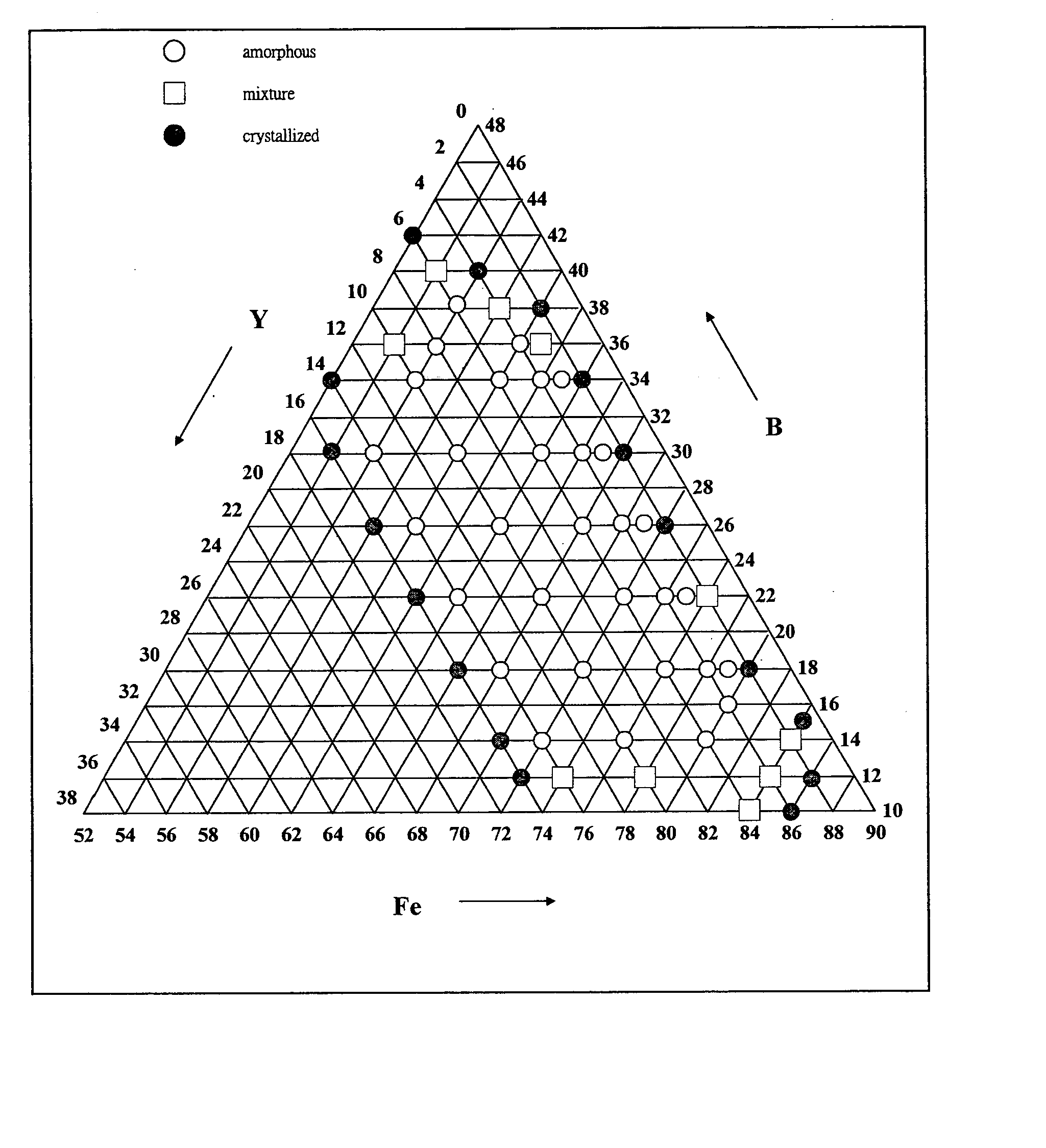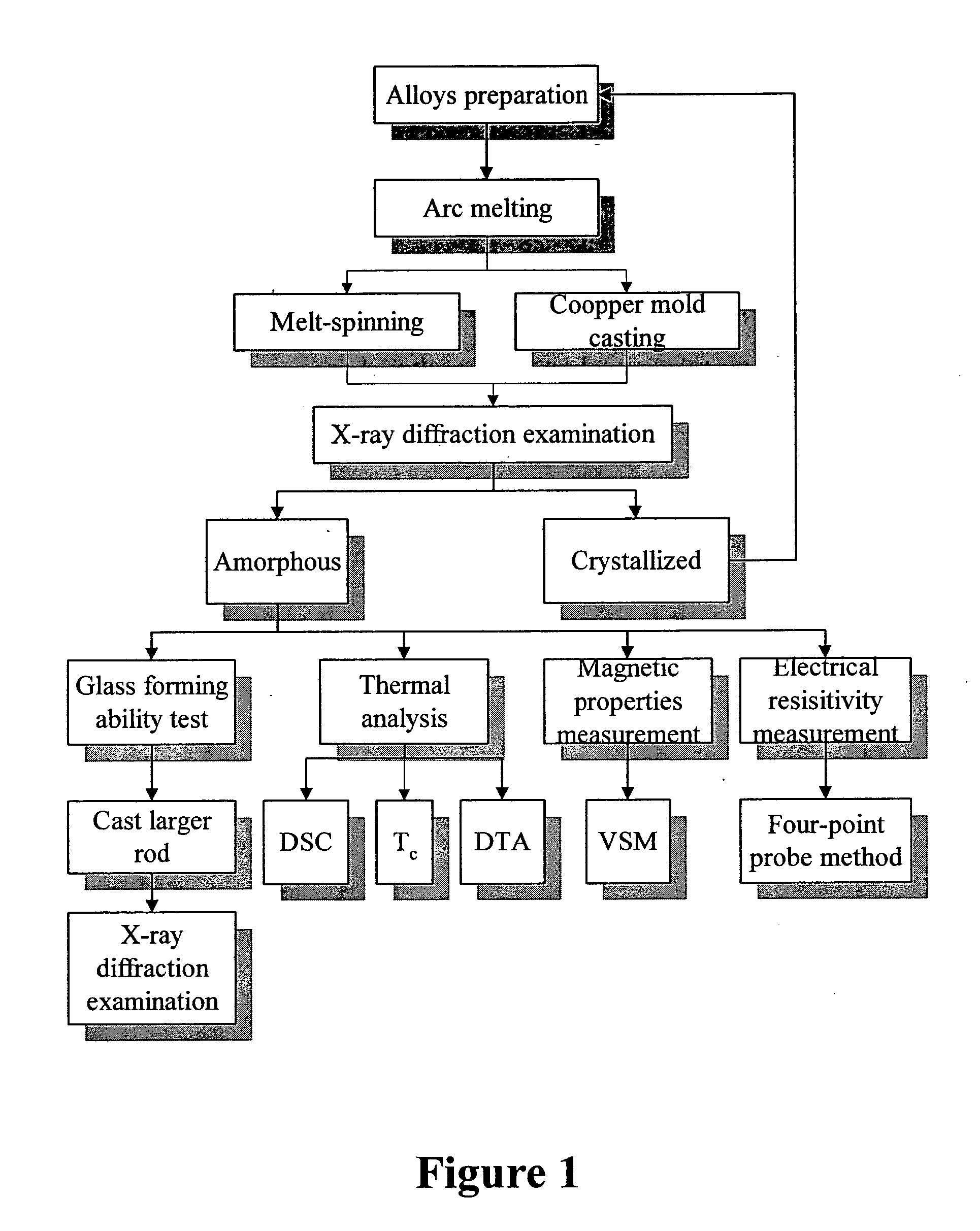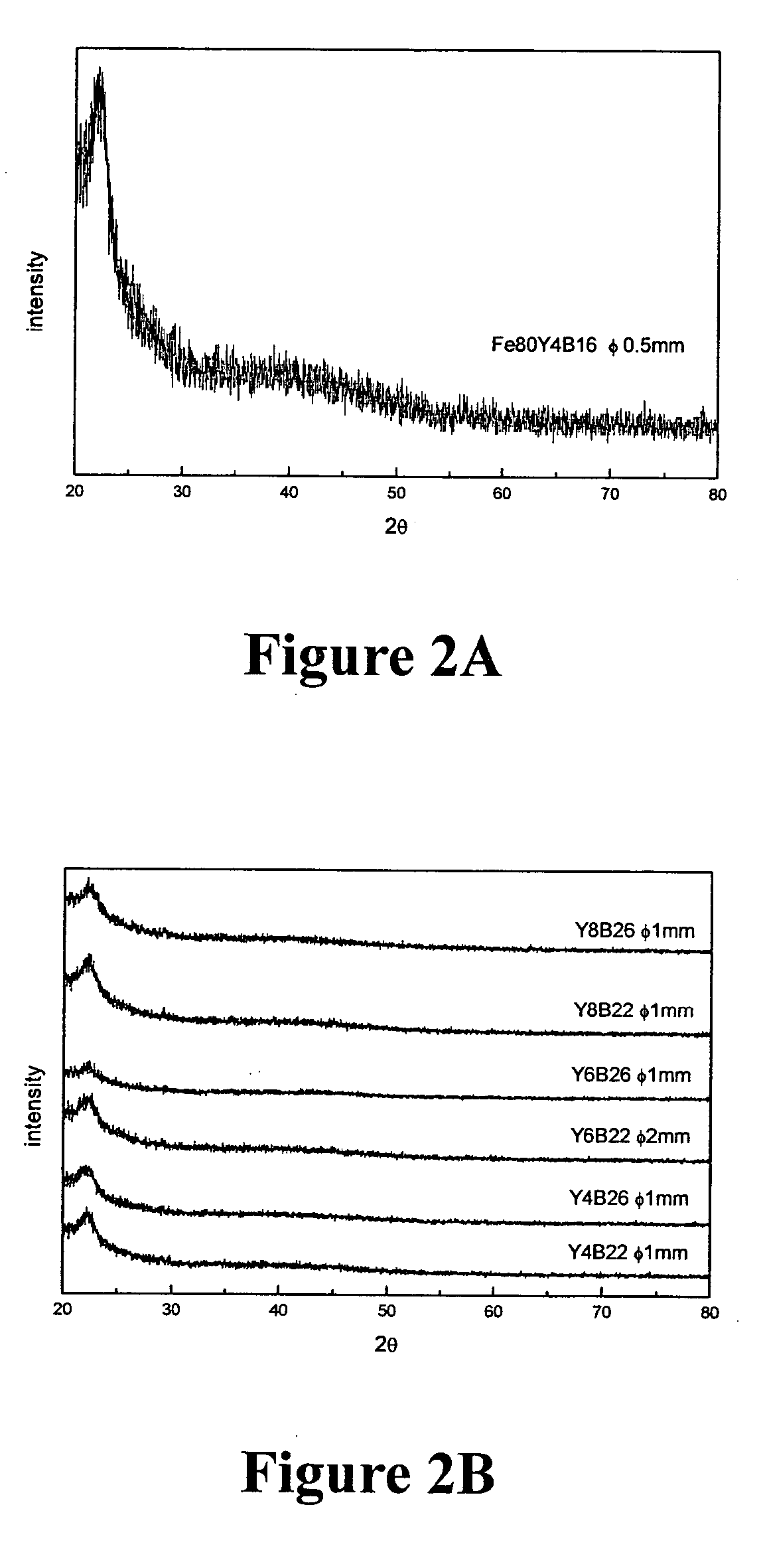Ternary and multi-nary iron-based bulk glassy alloys and nanocrystalline alloys
a nanocrystalline alloy and bulk technology, applied in the field of iron-based bulk amorphous alloys, can solve the problems of alloys not being able to form thicker or larger amorphous, and achieve the effect of improving glass forming ability and raising electrical resistivity
- Summary
- Abstract
- Description
- Claims
- Application Information
AI Technical Summary
Benefits of technology
Problems solved by technology
Method used
Image
Examples
example 1
Rods of Fe100-b-cYbBc Alloys 0.5 mm in Diameter by a Copper Mold Casting Method
[0084] 1) Structure Analysis
[0085] Fe100-b-cYbBc alloys were prepared, where b=1-16 at. %, c=10-42 at. % and melted then injection-cast into rods of 0.5 mm in diameter. They were examined by XRD to identify the structure. FIG. 2A shows a typical XRD pattern of the cast rods of 0.5 mm diameter. It shows that the examined rods consist of amorphous phase without detectable crystalline phases. FIG. 3 shows the composition ranges of amorphous, mixture phases and crystalline structure as examined by XRD. FIG. 3 shows that glassy rods with a diameter of at least 0.5 mm can be formed as the composition lies in the region of 54 at. %<a<84 at. %, 2 at. %<b<15 at. %, 12 at. %<c<39 at. %. This result shows that the Fe—Y—B alloys exhibits very good glass forming ability and a wide composition range of glass formation.
example 2
Rods of Fe100-b-cYbBc Alloys 1 mm in Diameter by a Copper Mold Casting Method
[0086] Fe100-b-cYbBc alloys were prepared where b=1-16 at. %, c=10-42 at. % and melted, injection-cast into 1 mm rods and then examined by XRD. FIG. 2B shows the typical XRD pattern of cast rods 1 mm in diameter. It shows that the examined rod consists of mainly amorphous phase without detectable crystalline phases. FIG. 4 depicts the composition ranges of amorphous, mixture phases and crystalline structure examined by XRD.
[0087] Glassy rods with a diameter of at least 1 mm is possible within the composition region 66 at. %72Y6B22, which is able to form bulk glassy rods with a diameter of at least 2 mm. We can see that the composition range for forming 1 mm bulk glassy rod is much smaller than that of 0.5 mm bulk glassy rods.
2) Thermal Analyses
[0088] The glassy samples were examined by differential scanning calorimetry to explore the thermal properties as depicted in FIGS. 5 to ...
example 3
The Casting of Fe-M-B Ternary Alloy Systems (M is One of the Sc, Sn, Zr, Hf, Nb, Ta, La, Ce, Pr, Nd, Sm, Eu, Gd, Th, Dy, Ho, Er, Yb)
[0092] In the last example, the embodiment shows that the best amorphization composition is with Fe=72 at. %, Y=6 at. % and B=22 at. %. Fe72M6B22 alloys were then prepared wherein M was selected from one of the elements with radius 130% larger than Fe, such as Sc, Sn, Zr, Hf, Nb, Ta, La, Ce, Pr, Nd, Sm, Eu, Gd, Th, Dy, Ho, Er and Yb. These Fe72M6B22 alloys were cast into rods of 0.5 to 2 mm in diameter, and their structure were examined by XRD.
[0093] Table 5 shows that these alloys can not be cast into a 1 mm glassy rod as M=Sn, La, Ce, Pr, Nd, Sm, Eu, Gd and Th. Amorphous state was not achievable even for those cast-rods 0.5 mm in diameter. These alloys have a common feature that these M elements do not follow our proposed rule of the necessity to form an iron-rich eutectic though they have an atomic radius larger than 130% that of Fe. On the other ...
PUM
| Property | Measurement | Unit |
|---|---|---|
| Length | aaaaa | aaaaa |
| Length | aaaaa | aaaaa |
| Length | aaaaa | aaaaa |
Abstract
Description
Claims
Application Information
 Login to View More
Login to View More - R&D
- Intellectual Property
- Life Sciences
- Materials
- Tech Scout
- Unparalleled Data Quality
- Higher Quality Content
- 60% Fewer Hallucinations
Browse by: Latest US Patents, China's latest patents, Technical Efficacy Thesaurus, Application Domain, Technology Topic, Popular Technical Reports.
© 2025 PatSnap. All rights reserved.Legal|Privacy policy|Modern Slavery Act Transparency Statement|Sitemap|About US| Contact US: help@patsnap.com



